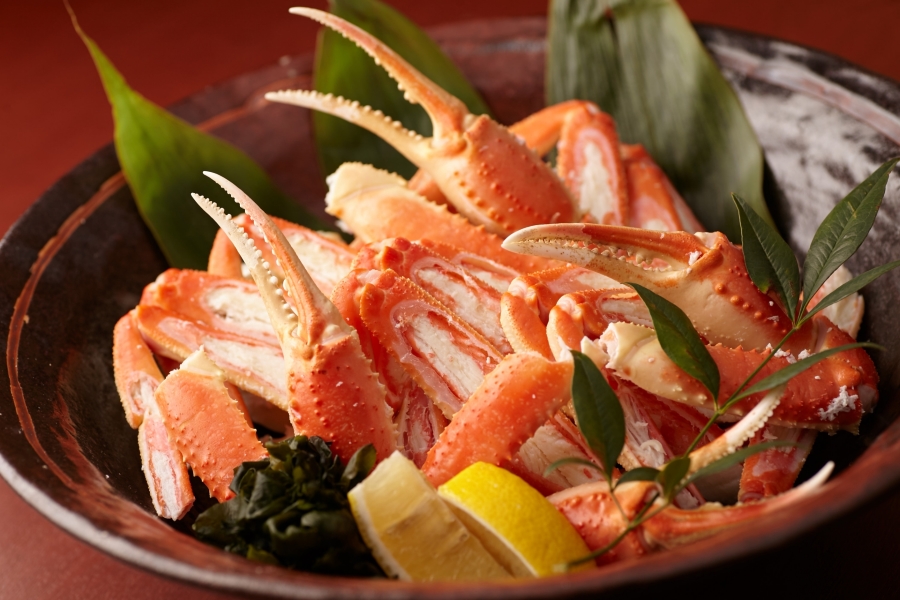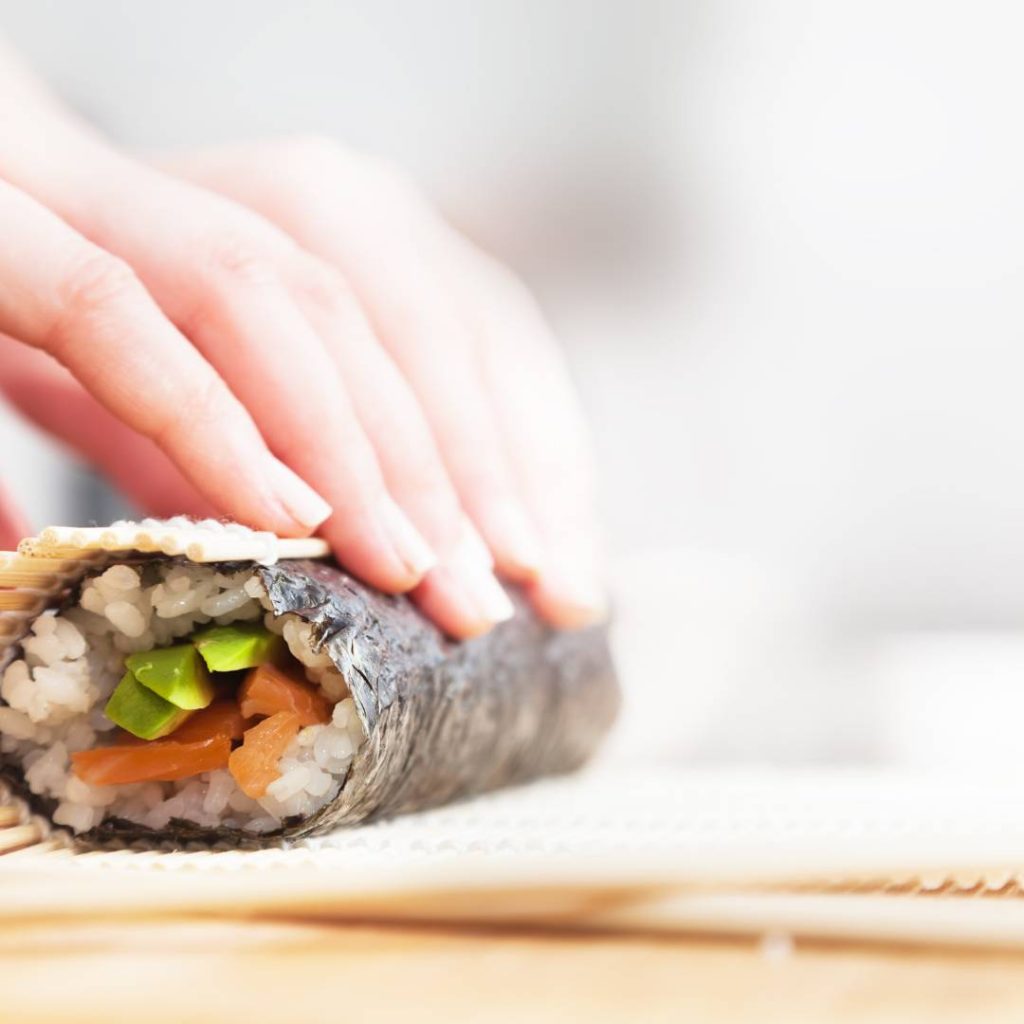Kani is one of the most popular ingredients in sushi. It is a type of crab meat that has become a staple in many sushi rolls and dishes. However, not everyone is familiar with what kani is and how it is used in sushi. This article will talk about what kani is, the different kinds of kani sushi, the ingredients used in kani sushi, and how to make it.
Kani sushi is a type of sushi that is made with crab meat. There are different types of kani sushi, including nigiri sushi, maki sushi, and temaki sushi. The preparation of kani sushi is simple and requires attention to detail. The ingredients used in kani sushi change based on the type of roll and the chef’s personal tastes.
Overall, people who like sushi and people who have never tried sushi need to know what kani is and how it is used in sushi. Being aware of what kani is and how it is used can help you make smart choices, whether you want to make sushi at home or try different kinds of sushi rolls at a restaurant.
Kani, sometimes called kanikama, is a ubiquitous ingredient in many Japanese and fusion dishes like sushi rolls, crab Rangoon, seafood salads, and more. With its flaky, tender texture and sweet, briny flavor, it’s easy to see why people love it. But there’s an ongoing debate around whether kani is actually real crab meat. Let’s get to the bottom of this imitation crab meat.
What Exactly is Kani?
Kani is made from surimi a paste made from pureed whitefish like pollock or hake. To make surimi the fish is first filleted and minced, then washed repeatedly to remove fat, odors, and impurities. The purified fish is then blended with additives like wheat flour, egg whites, starch, sugar, MSG, sorbitol, and crab flavoring.
This paste is shaped into blocks that get sliced into the sticks we know as kani. A red food coloring is added to give it that iconic crab-like hue. While kani does contain some fish meat it has zero real crab.
Why Do People Think Kani is Real Crab?
There are a few reasons why kani is so often mistaken for real crab:
-
Appearance – Between the red color and shredded, fibrous texture, kani looks a lot like crab meat at first glance
-
Flavor – Manufacturers use crab extract to give kani a sweet, briny seafood flavor. For many, it’s an extremely convincing imitation.
-
Naming – In Japanese, “kani” just means crab. As it became popularized in the U.S., the name stuck, adding to the confusion.
-
Restaurants – Many sushi restaurants list dishes with kani as “real crab” on their menus. This perpetuates the myth that it’s the real thing.
Nutrition Comparison: Kani vs Real Crab
Since kani is an imitation, how does it stack up nutrition-wise to real crab meat? Here’s a look:
-
Protein – Real crab has about 16-20g of protein per 3 oz serving. Kani has around 11g.
-
Fat – Kani is very low in fat at just 1g per serving. Real crab can have up to 1-2g of heart-healthy omega-3s.
-
Vitamins & Minerals – Real crab contains more bioavailable nutrients like selenium, phosphorus, and B12.
-
Sodium – With added salt and MSG, kani is much higher in sodium than real crab.
-
Sustainability – Crab fisheries can damage ecosystems, while kani utilizes more sustainable whitefish.
So while kani makes a convenient substitute, real crab does edge it out in nutritional value.
Is Kani Healthy?
Given that it’s not a whole food, is kani unhealthy? Not necessarily. Here are some pros and cons:
Pros:
- Low in calories and fat
- Provides protein
- Uses sustainable fish
Cons:
- Highly processed
- Contains additives
- High in sodium
- Not nutrient-dense
In moderation, kani can be part of a balanced diet. But for best nutrition, real crab or other seafood is preferable.
The Imitation Crab Debate
On forums and social platforms like Reddit, there are heated debates around kani and whether sushi restaurants should be allowed to call it real crab without clarifying that it’s imitation. Some of the arguments:
“Pro-Kani: Kani tastes good and it’s affordable. Not everyone can afford real crab meat, so kani makes sushi more accessible. Restaurants need to keep menus simple and recognizable. People should know by now that it’s imitation.”
“Anti-Kani: Call it what it is – imitation. People assume they’re getting real crab and feel ripped off when they find out it’s not. Restaurants should clarify on menus that it’s faux crab. People have allergies and want to know what they’re really eating.”
There are persuasive points on both sides. But simply calling it kani rather than “real crab” would help dispel much of that confusion.
Common Questions
Here are answers to some other frequently asked questions about kani:
Is kani gluten-free? No, the wheat flour in kani contains gluten. Those with celiac disease or gluten intolerance should avoid it.
Is kani suitable for vegetarians? No, kani contains fish meat so it is not vegetarian, even though it may seem “fake”.
Is kani ever real crab? Rarely, some manufacturers may blend in a bit of real crab with the surimi, but generally it contains no real crab meat.
Is kani cooked? Kani is fully cooked during processing, so no additional cooking is required. Simply thaw if frozen and serve.
Tips for Enjoying Kani
While it may not be real crab, kani has its place in sushi and Asian cuisine. Here are some tips for enjoying it:
-
Read menus carefully and look for it to be labeled as “imitation crab.”
-
Opt for real crab when possible, or try other sushi fillings like shrimp or avocado.
-
Enjoy kani in moderation as part of a healthy, balanced diet.
-
Store kani properly and use within 1 week of opening for best quality and taste.
-
Experiment with recipes that use kani in fun, creative ways like sushi bowls, crab dip, or seafood salads.
So is kani real crab? Not quite. But despite being an imposter, it has carved out a place for itself in Westernized Asian cuisine. As long as diners know what they’re getting, there’s no reason not to enjoy this imitation crab in moderation.

What is Imitation Crab
Imitation crab, which is also called kamaboko or surimi, is often used in California rolls and other types of sushi. However, it is not real crab meat. The real thing is a processed paste made of different kinds of fish, starch, fillings, flavors, coloring, and sometimes other meat that is shaped to look like crab legs. Other additives include egg white, salt, and sugar.
The main ingredient in imitation crab is usually Alaskan pollock, a type of white fish. The fish is filleted, deboned, and minced into a paste. Starch, such as wheat or corn, is added to bind the paste together. Then, flavorings and colorings are added to give the paste a crab-like taste and appearance. The paste is then shaped into crab legs or other shapes and cooked.
Ingredients of Kani Sushi
When it comes to making Kani Sushi, there are a few essential ingredients that you will need. These ingredients include sushi rice, nori seaweed, kanikama, crab sticks, kani sticks, and sauces. We will look at each of these ingredients in more detail in this section and talk about how they work together to make the perfect Kani Sushi.
Sushi rice is a short-grain rice that is used to make sushi. It is the foundation of any sushi dish, including Kani Sushi. When you cook sushi rice, you mix rice vinegar, sugar, and salt together. This makes the rice taste sweet and sour. The texture of sushi rice is sticky, which helps it hold together when rolled into sushi.
Nori seaweed is a type of dried seaweed that is used to wrap sushi. It is thin and crispy, and it adds a slightly salty flavor to the dish. Nori seaweed is an essential ingredient in Kani Sushi, as it holds the rice and filling together.
Kanikama is a type of crab stick that is commonly used in sushi. It is made from surimi, a paste made from white fish and starch. Kanikama has a mild, slightly sweet flavor, and a firm, chewy texture. It is a popular ingredient in Kani Sushi, as it adds a seafood flavor to the dish.
Crab sticks are similar to Kanikama, but they are made from real crab meat. They have a delicate, sweet flavor, and a soft, flaky texture. They aren’t used as often in Kani Sushi as Kanikama, but they can be used instead.
Kani sticks are another name for Kanikama. They are a popular ingredient in Kani Sushi, as they add a seafood flavor to the dish. Kani sticks are typically sliced into thin strips and mixed with other ingredients, such as avocado or cucumber.
Sauces are an important part of Kani Sushi, as they add flavor and depth to the dish. Soy sauce, wasabi, and rice vinegar are commonly used in sushi, including Kani Sushi. A lot of people also like mayonnaise on their Kani Sushi. Japanese mayonnaise, like Kewpie Mayo, is often used. Sriracha sauce can also be used to add a spicy kick to the dish.

